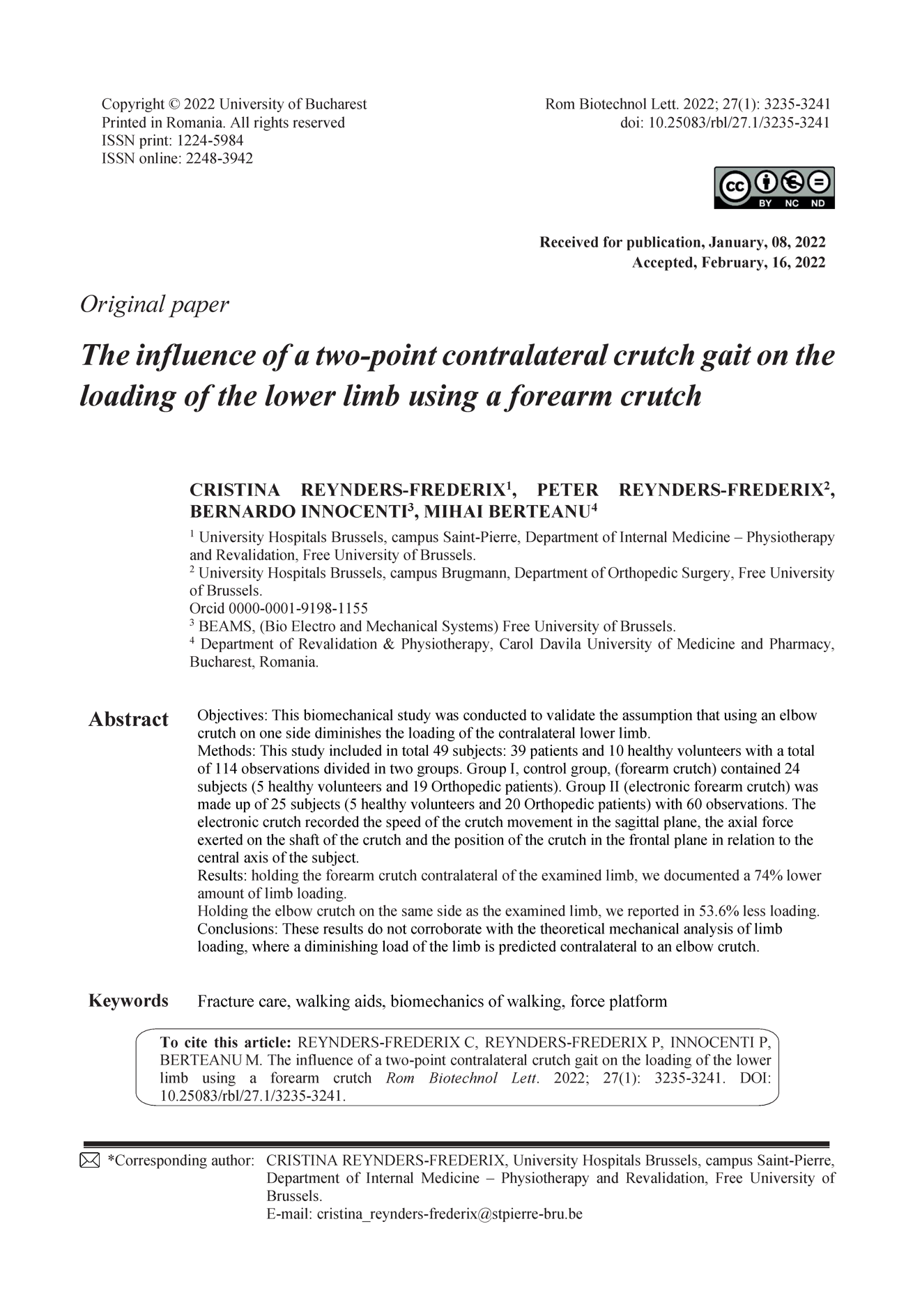The influence of a two-point contralateral crutch gait on the loading of the lower limb using a forearm crutch
DOI:
https://doi.org/10.25083/rbl/27.1/3235-3241Keywords:
Fracture care, walking aids, biomechanics of walking, force platformAbstract
Objectives: This biomechanical study was conducted to validate the assumption that using an elbow crutch on one side diminishes the loading of the contralateral lower limb.
Methods: This study included in total 49 subjects: 39 patients and 10 healthy volunteers with a total of 114 observations divided in two groups. Group I, control group, (forearm crutch) contained 24 subjects (5 healthy volunteers and 19 Orthopedic patients). Group II (electronic forearm crutch) was made up of 25 subjects (5 healthy volunteers and 20 Orthopedic patients) with 60 observations. The electronic crutch recorded the speed of the crutch movement in the sagittal plane, the axial force exerted on the shaft of the crutch and the position of the crutch in the frontal plane in relation to the central axis of the subject.
Results: holding the forearm crutch contralateral of the examined limb, we documented a 74% lower amount of limb loading. Holding the elbow crutch on the same side as the examined limb, we reported in 53.6% less loading.
Conclusions: These results do not corroborate with the theoretical mechanical analysis of limb loading, where a diminishing load of the limb is predicted contralateral to an elbow crutch.





